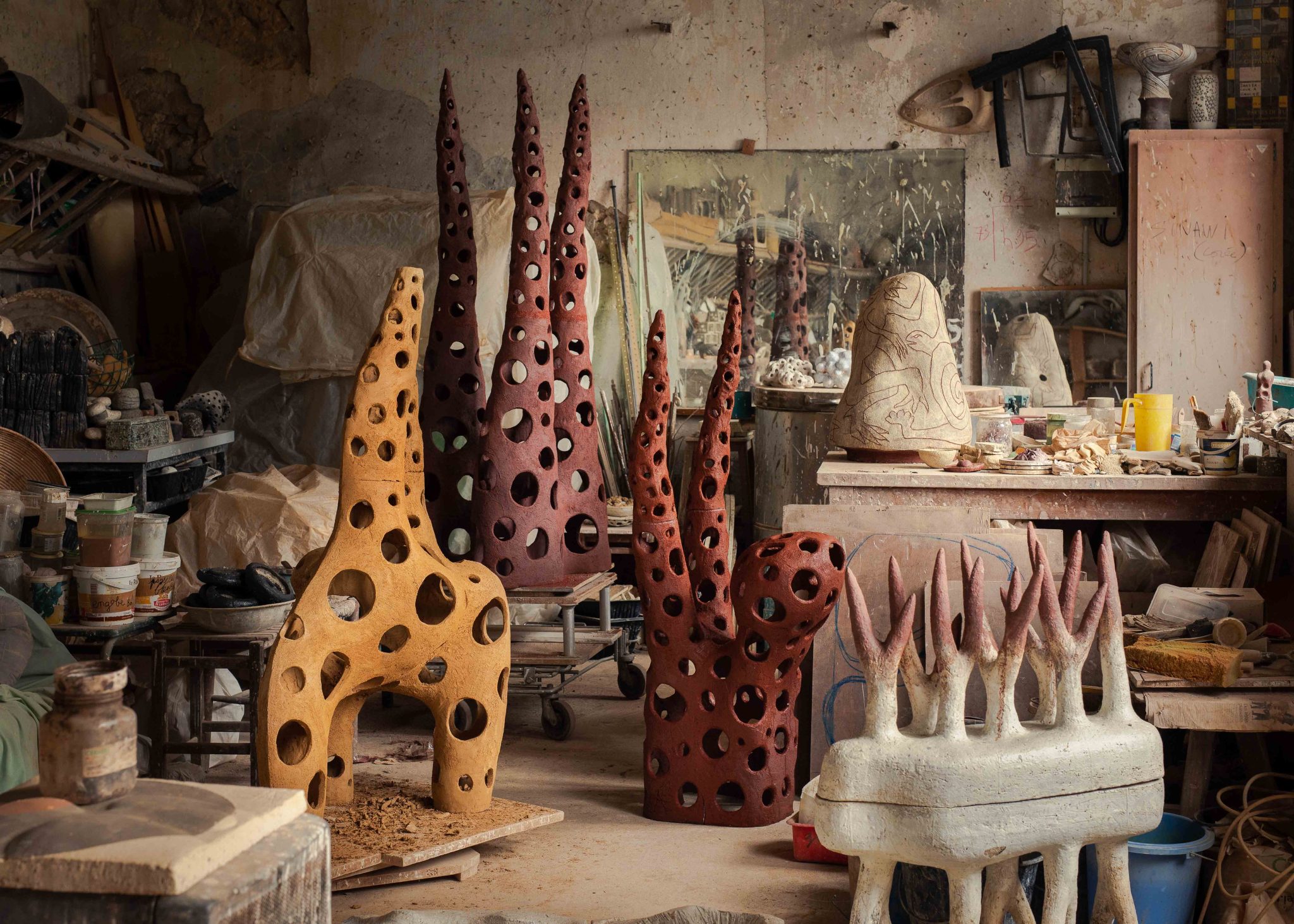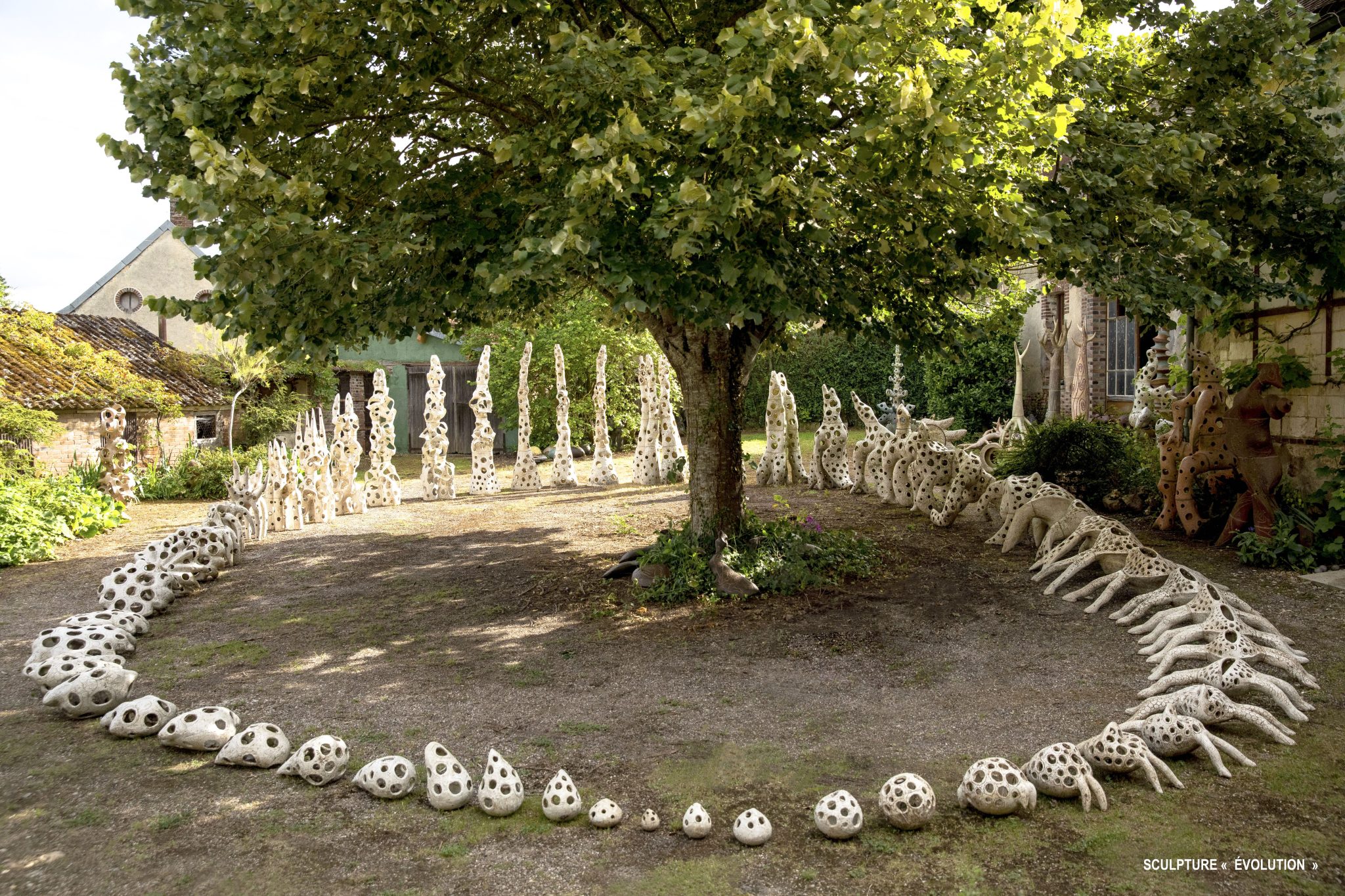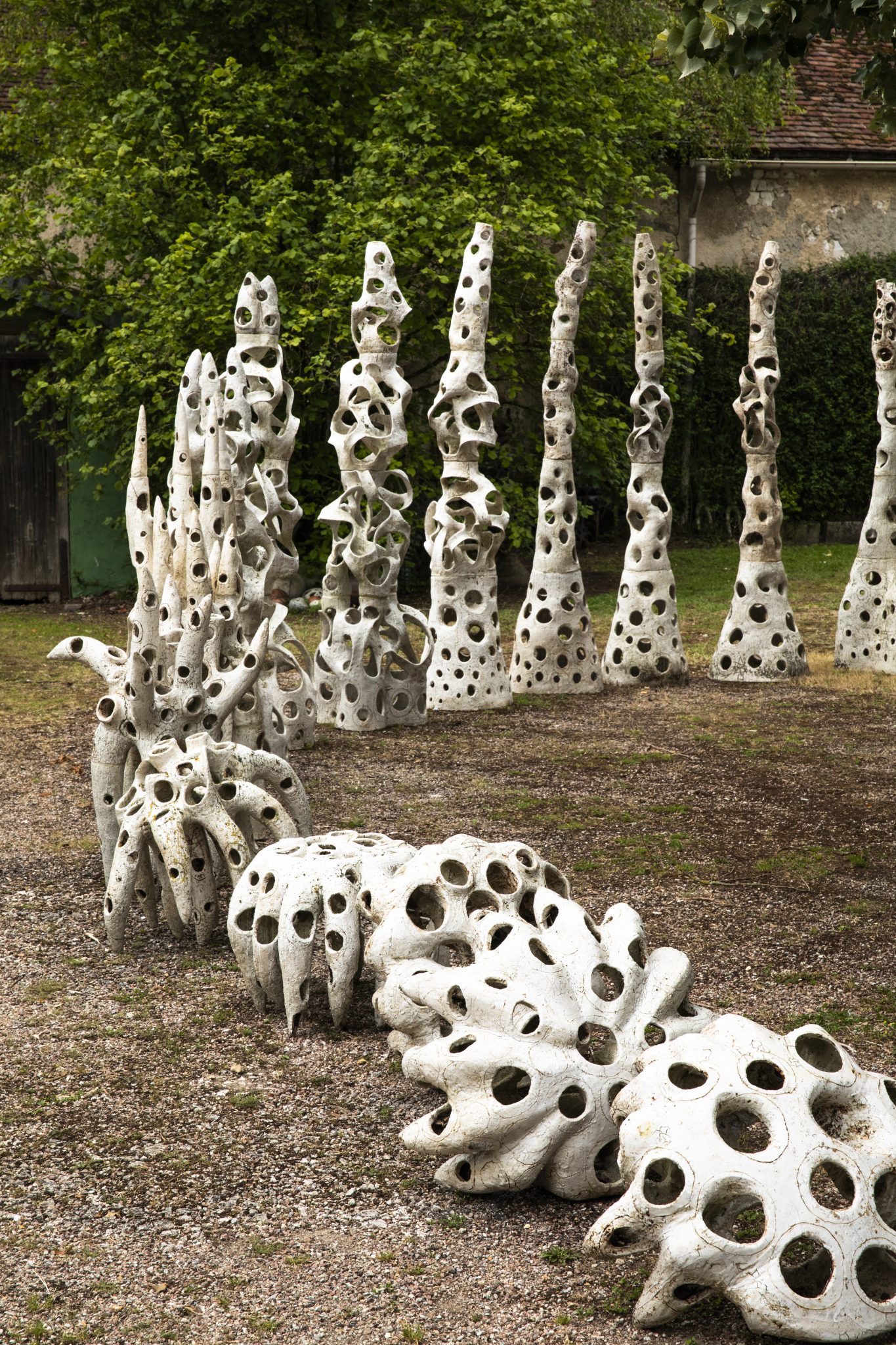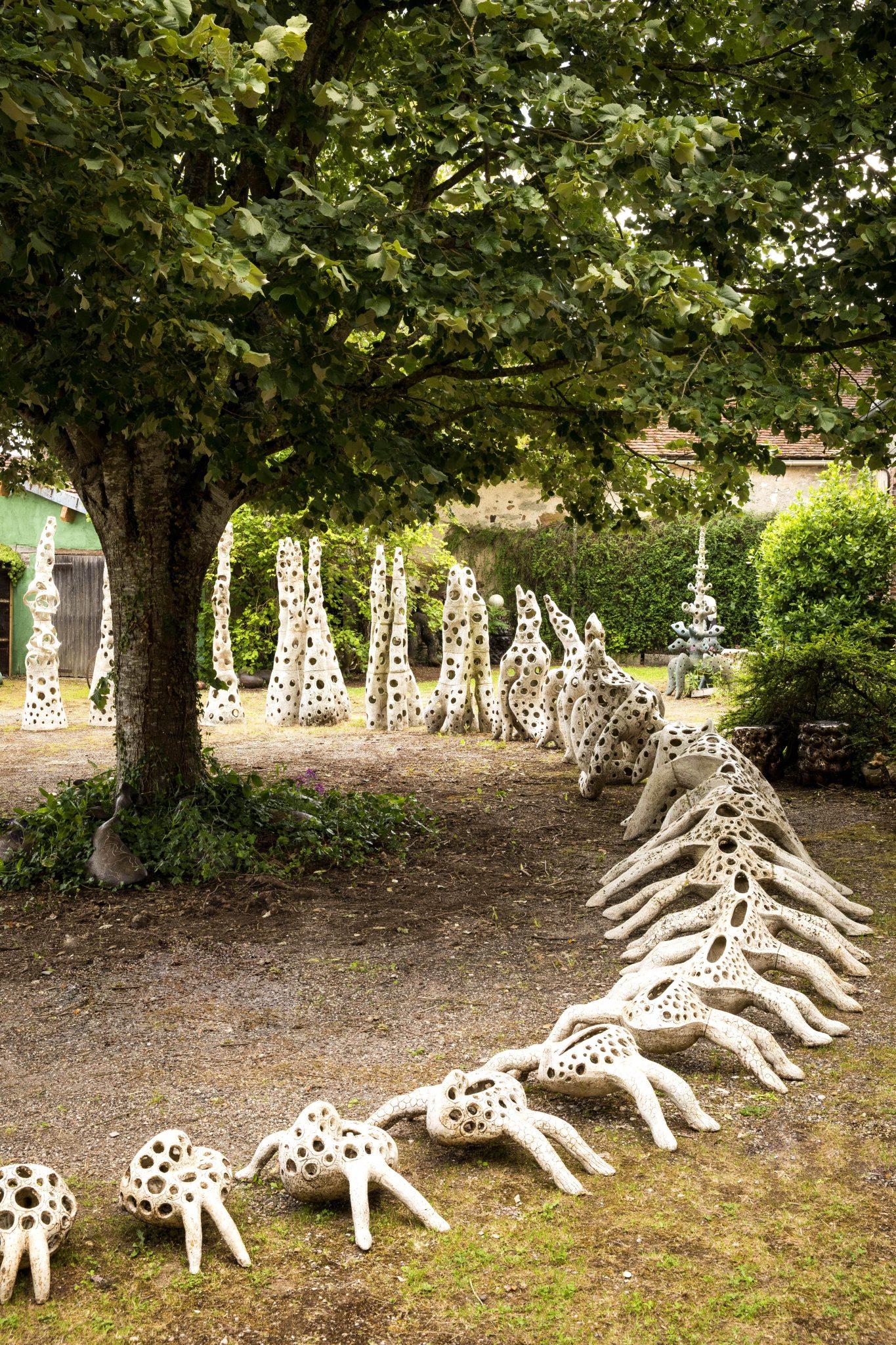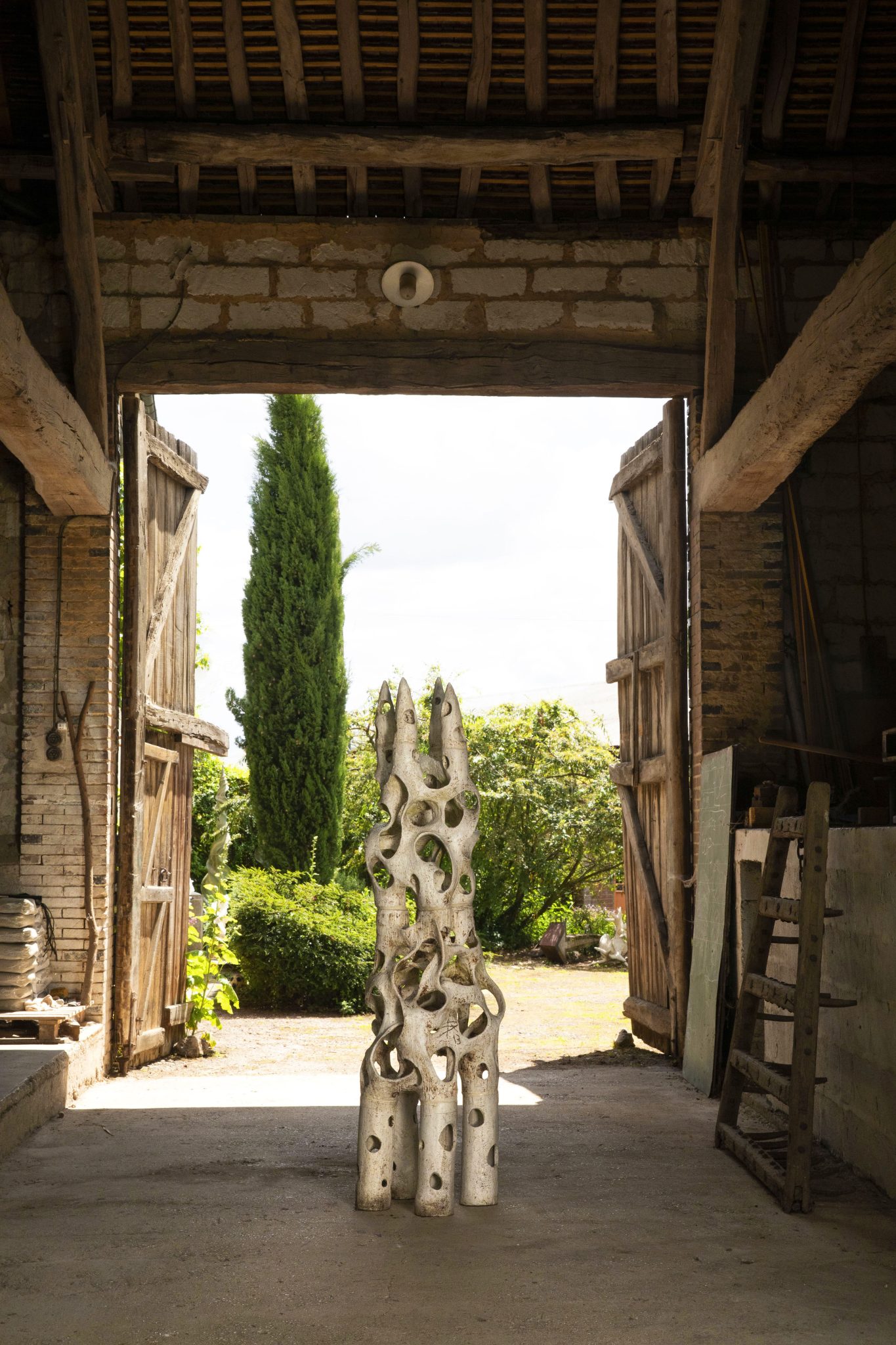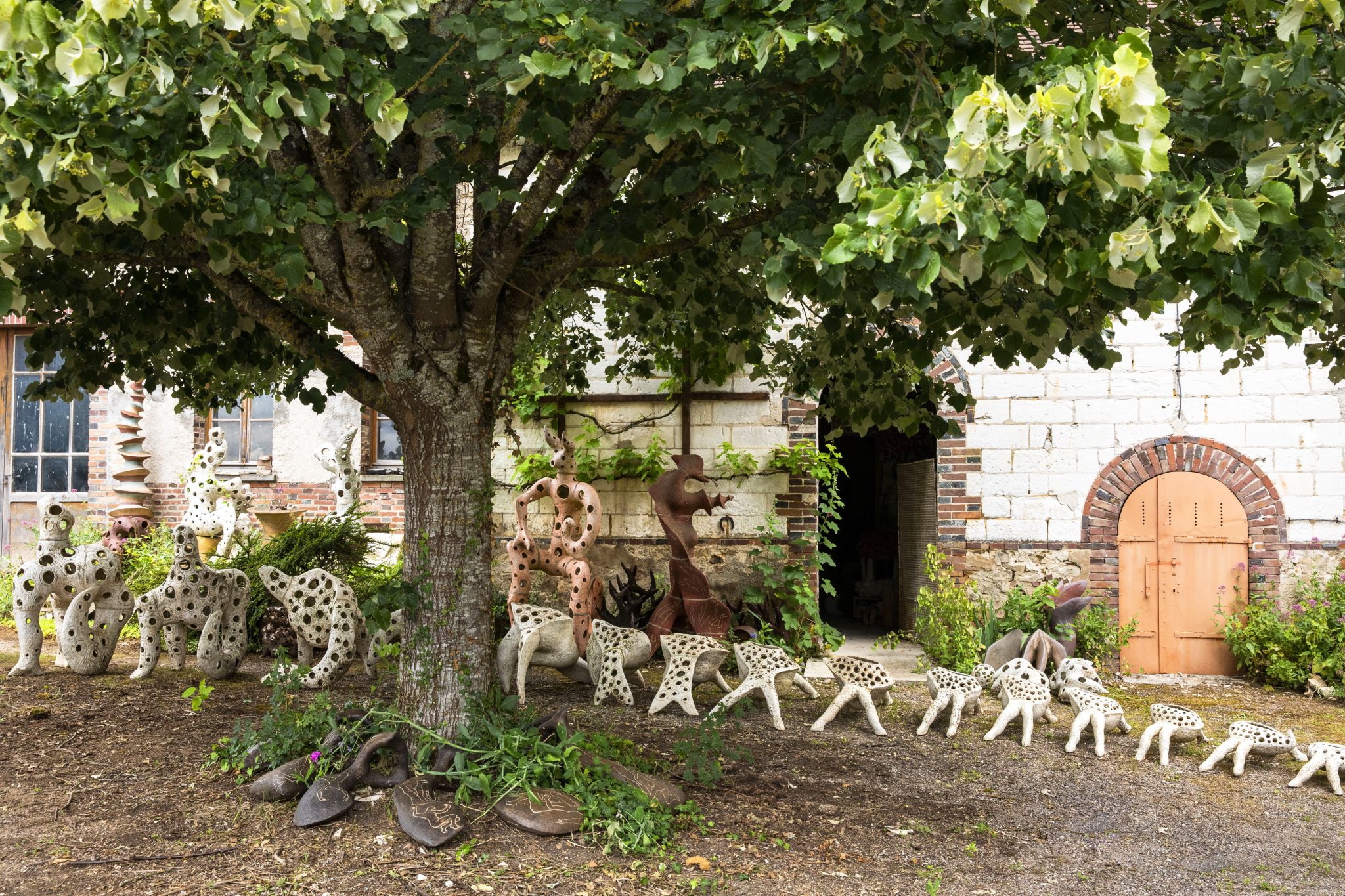« Creativity is power, especially when it allows you to craft your own world ». French artist Agnès Debizet is happy to switch everyday reality for the cocoon of her art objects. Her pieces often evolve into zoomorphic forms, imaginative creatures, and extraterrestrial entities. We spoke with her about her approach, the process, and the physicality of her field.
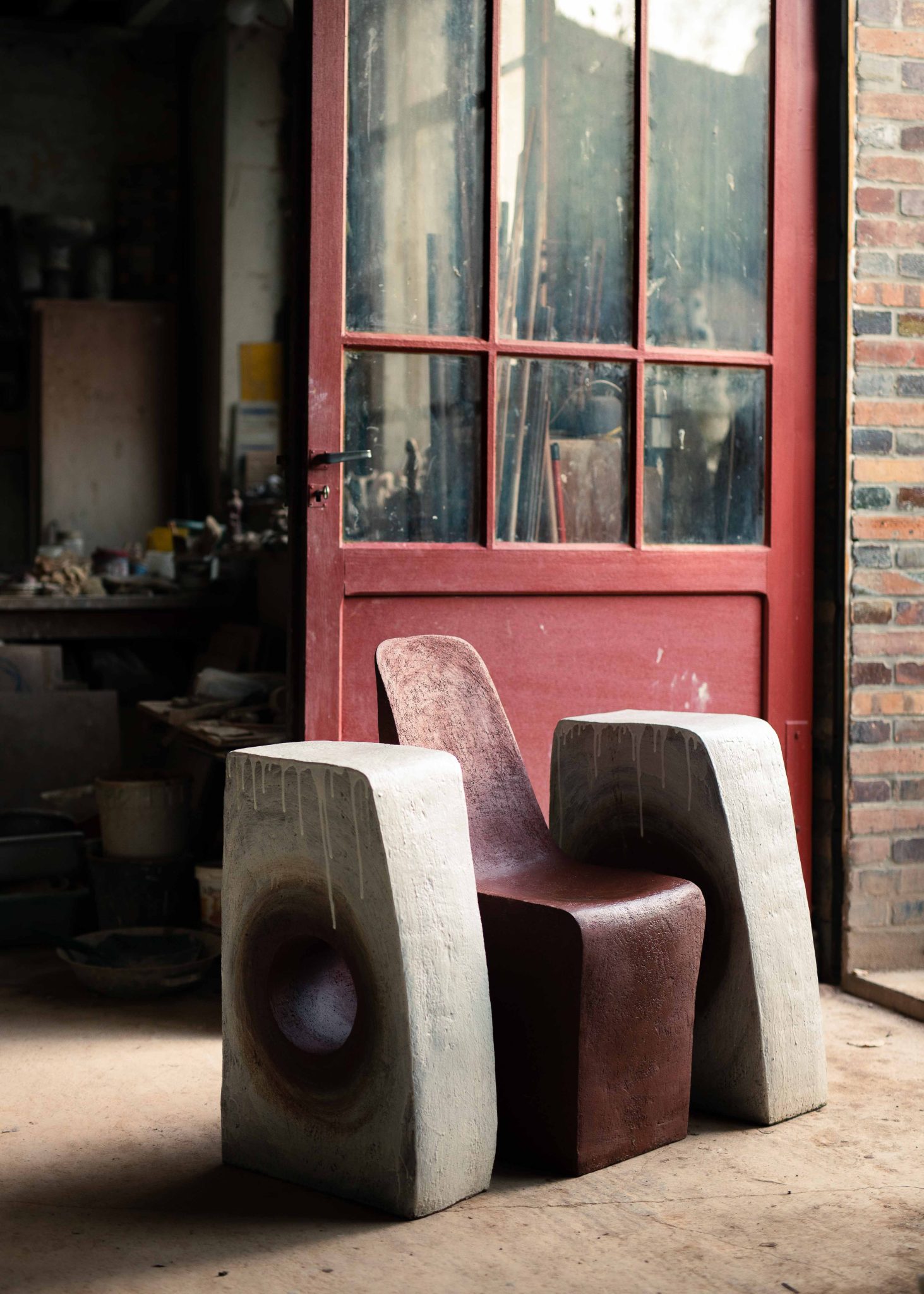
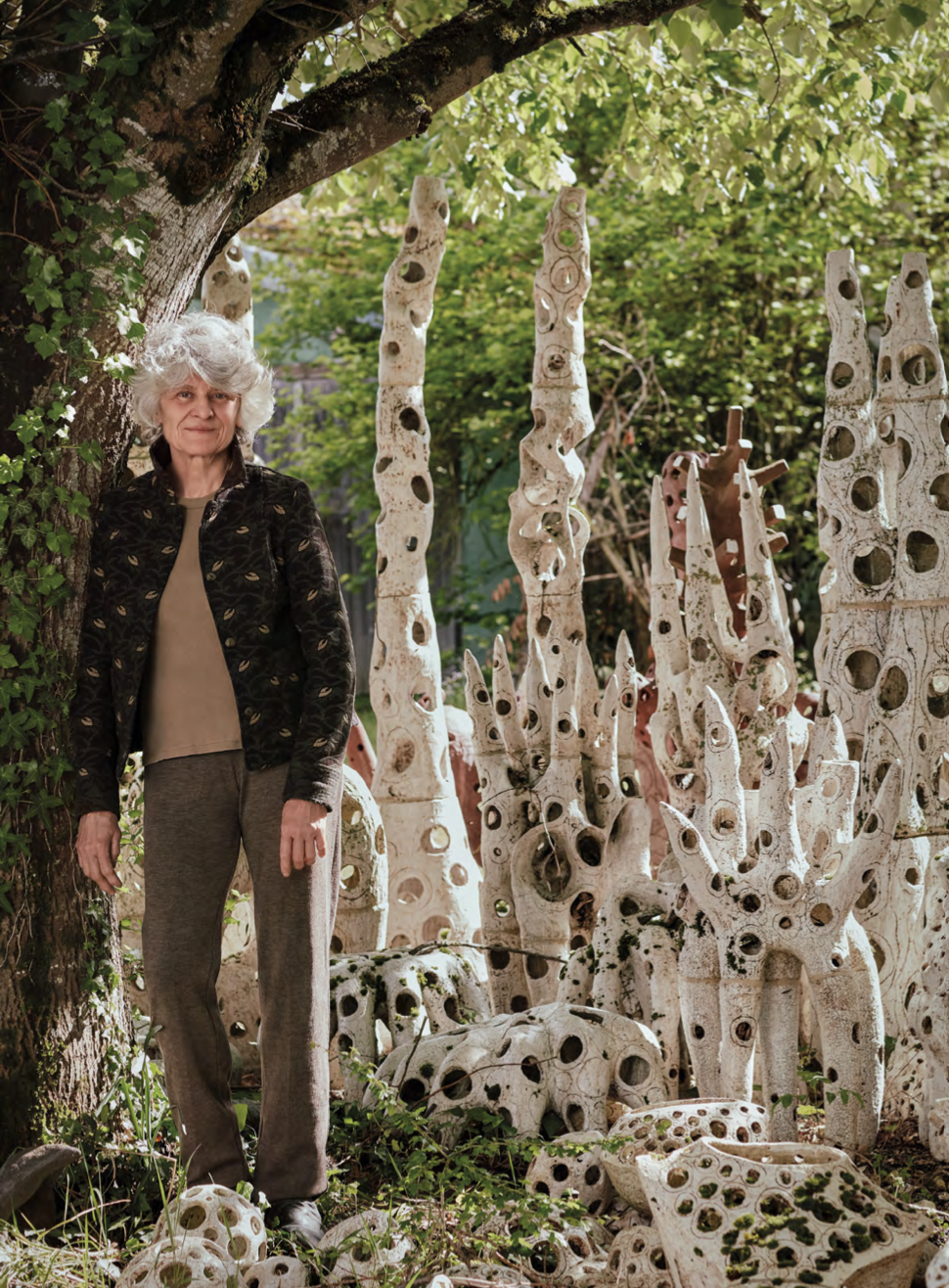
In eighties Paris, Agnès Debizet, born in Marseille, followed evening classes on pottery and ceramics. Even though she never undertook official studies, this was the start of a thriving career where she can fully develop herself. The material of clay has been her favourite companion ever since.
For forty years she has been listening to her intuition and growing along with the works in her portfolio. You need only see one design of the artist to never forget the aesthetic direction of her objects. Surrealist, alienating, and unexpected. It is words like these that, according to us, get closest to the core of her philosophy. For years, she acted solely out of the desire to express her ideas, without thinking that perhaps people would want to buy them.
There certainly was an audience, because today she has been a respected and coveted artist for quite some time, with supporters who marvel every time when she presents something new. The road she has traveled over the decades is personal above all else. Her work is her, and she is her work.
Debizet relies on an interdisciplinary array of inspiration. All the things that speak to her encounter each other in the clay she uses to make her genius tangible. She herself hopes to conjure associations related to metamorphoses, energy, nature, mythology, and more. She regularly returns to books on old civilizations. In particular, she recommends the L’Univers des Formes collection by André Malraux.
In daily life, in turn, she is often inspired by the volume of a building, an arbitrary composition on the street, a display window she passes, and so much more. Sometimes, she rather tries to express a feeling or a physical state. Animals, plants, and nature in general are, of course, a continuous driving force as well. You notice this, too, because of the staging in which the art is placed, seeing that she has done several exhibitions on special locations.
Each time, her creations entered a fundamental dialogue with a specific context or place. This meant that she, as a maker, became more and more skilled in sculptures driven by a previously determined theme or event.
Another asset that sets the artist apart is the fact that she makes ensembles. These are works that consist of several pieces, Évolutions being the most well-known example of this. With 58 separate objects made over a period spanning more than ten years, it probably deserves the title of her most ambitious pro ject to date. Without a doubt, the design reminds of living organisms; animal contours that appear to move independently.
Exactly because her objects are difficult to grasp, they develop their entirely own category, with a universal appeal. Not long ago, she worked on Entrelacs Luminaire: a work of no less than six meters long that is not just a clay sculpture. For this, she worked with an electrician. They installed lighting in the construction, which has the structure of a honeycomb.
The result is a fusion of two worlds that begins to take on a life of its own. With many achievements to her name, Debizet has also gained a profound insight in her strengths and weaknesses. What was the main challenge she needed to overcome as an artist up until now? Creating without imposing limitations on herself.
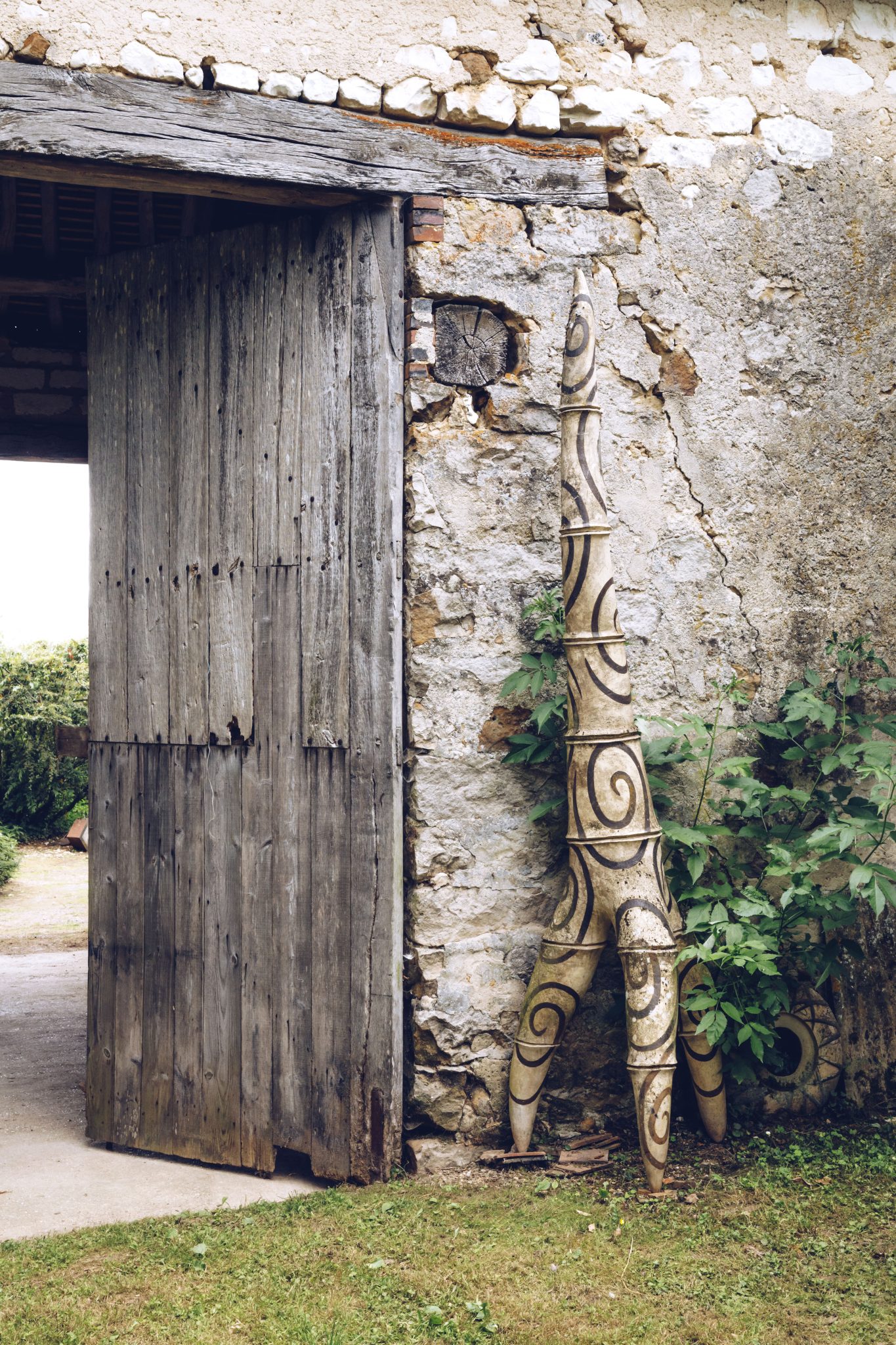
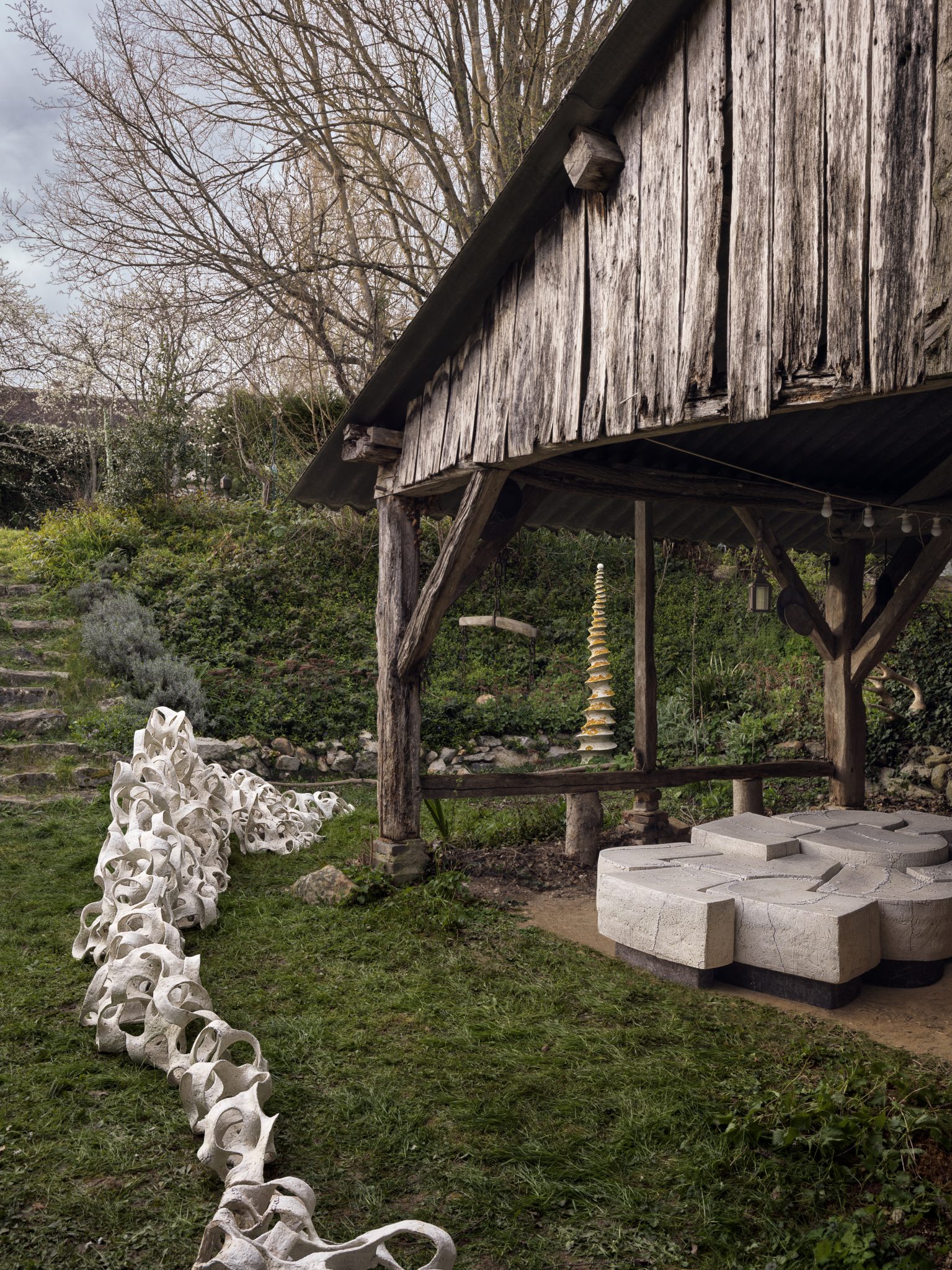
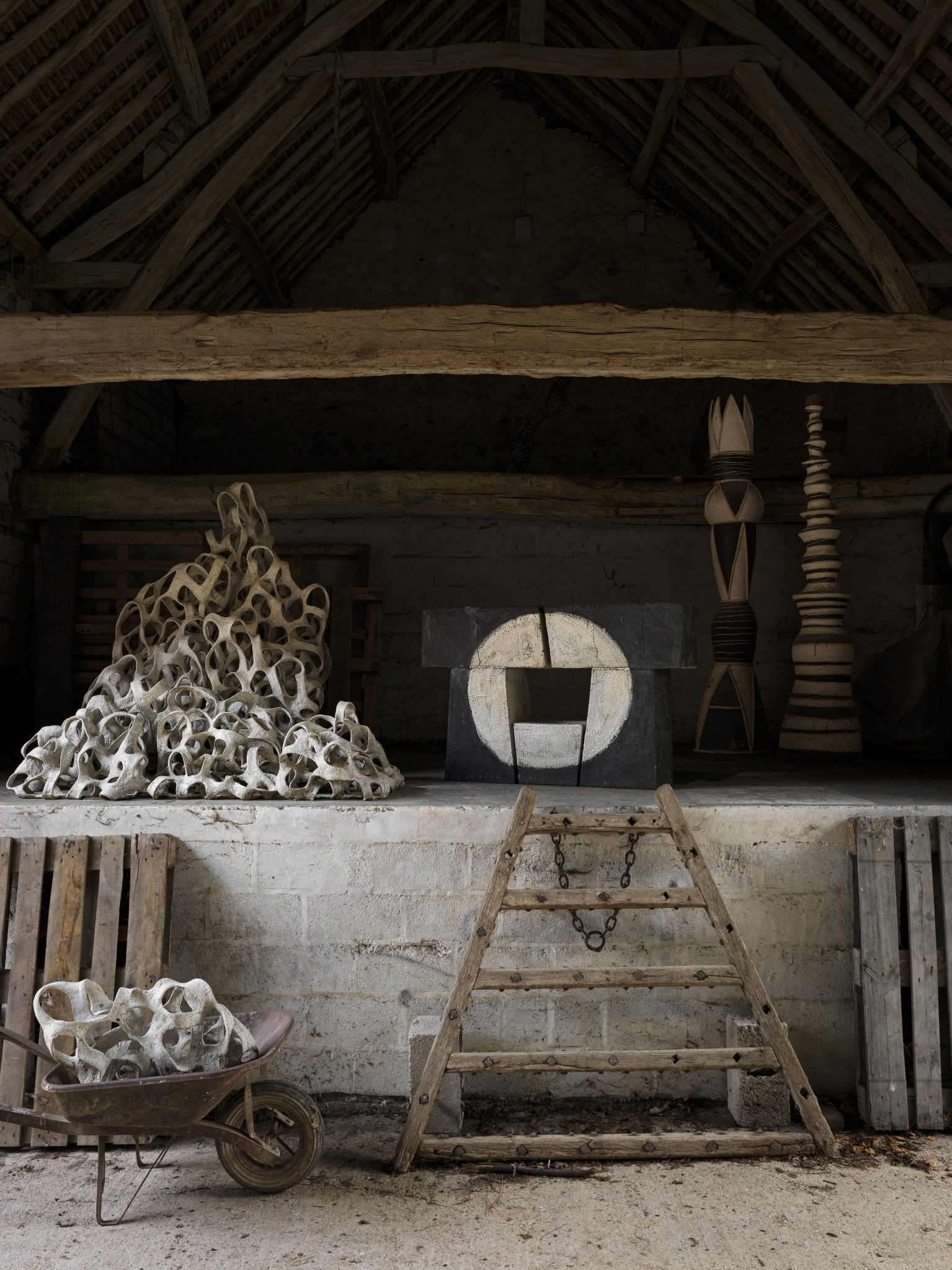
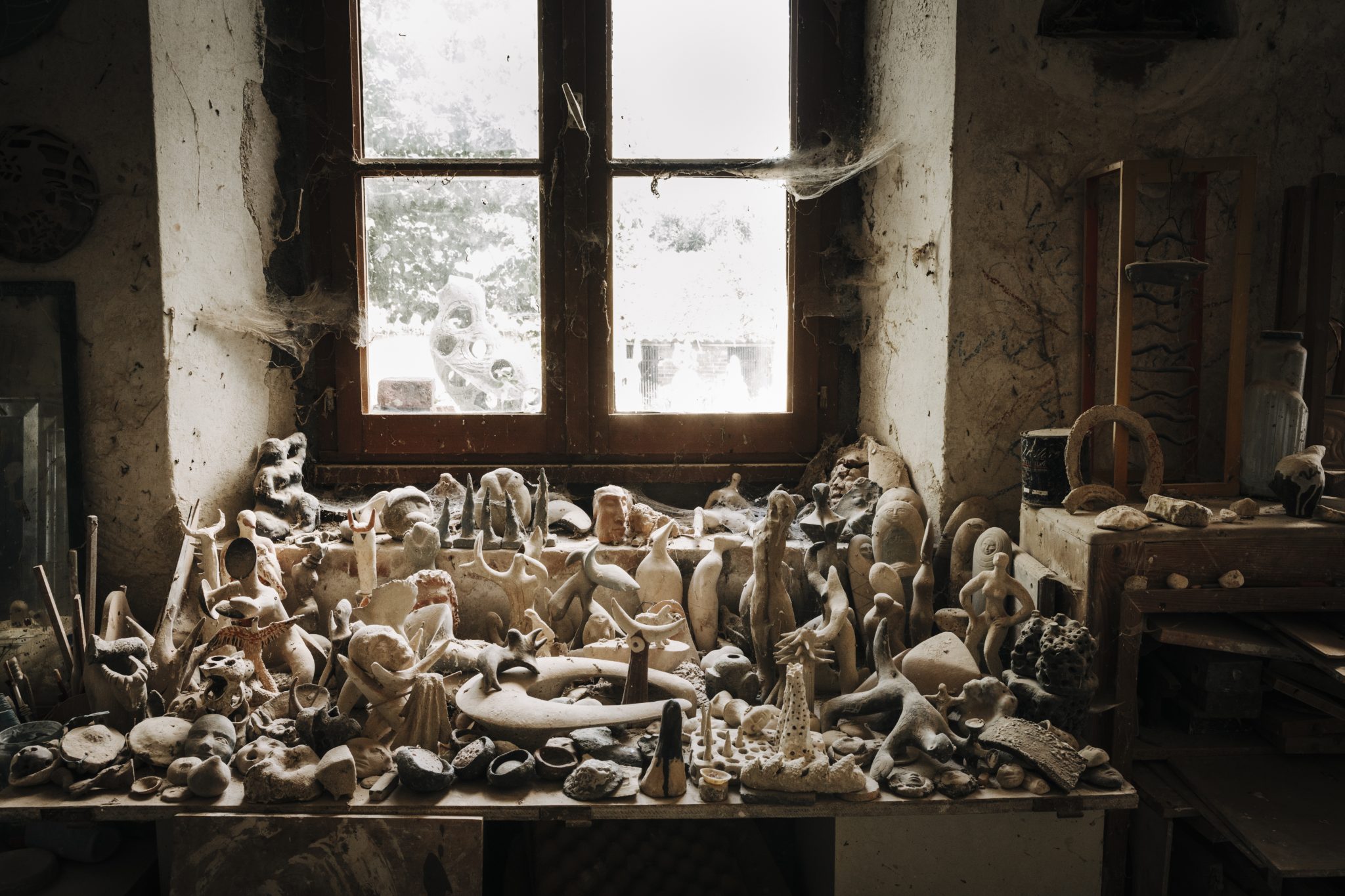
Debizet’s workshop is an experience that plays on the senses. She herself appreciates her craft most because of its physical aspect. Her body that she needs to use, the clay she models patiently, the way she dances from one side of the room to the other, the heat or the cold that fills the space, the dust and the mud that emphasize the value of imperfection.
For materials, she uses unglazed clay and engobes. The latter is a special type of clay that she thins and brushes on the sculpture before it goes in the oven. When baking, the pieces shrink a little bit, which leads to small cracks becoming visible. Next, she fills these up with a darker clay or glaze. Depending on the base clay, the additional pigments, the baking process and other variables, the result is different each time.
In the real world, outside of the walls of her workspace, she often tends to justify the imperfections, the so-called mistakes, of her creations.
She simply does not have full control over the end result. This is also due to her pieces being so big in size, which means that she needs to assemble them in several pieces. Something goes wrong from time to time, or she makes use of the margin for improvisation. Those characteristics are an enrichment however, both for her as for her audience.
Apart from the physicality of the process itself, the artist really treasures the design and conceptual phase. In her work, she resides in a sort of parallel world where she finds peace, in contrast to how she often experiences factual reality. She believes that her creations have their own life and that they communicate with one another, like a herd of animals that interact. The transformative aspect is extremely important for the maker, both in her way of working and in her perception of her work. One project intuitively leads her to the next. ‘I am not someone who perfects through repetition, but rather someone who transforms through evolution.’
‘Focus entirely on art or focus entirely on something else.’ It is the advice that Agnès Debizet gives to aspiring artists. The experienced ceramist conjures a lot of respect and admiration with her alienating, anti-conformist sculptures. She does not follow traditional notions, because she feels most at ease in her own world, surrounded by her loyal herd of creations. Somewhere between the factual and the imaginary, she gathers her clay. Throughout her career, her own identity and her sculptures have embraced each other more and more intimately, until they can no longer be separated. This fascination and dedication make her an extraordinary artist.
